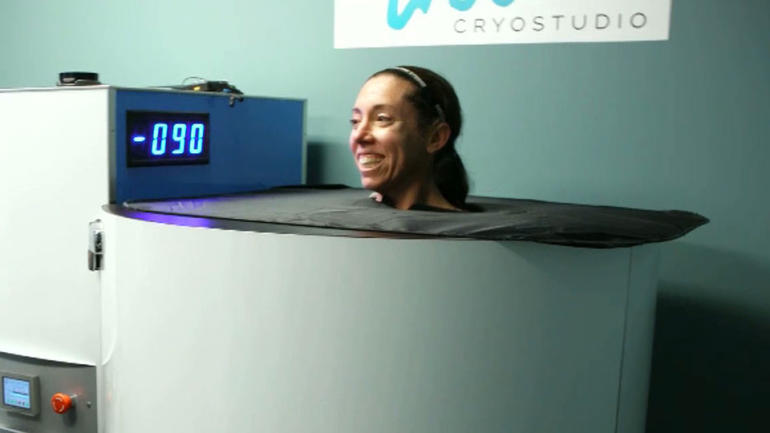When we experience pain, we turn to all kinds of remedies from pills to acupuncture. One method takes it to the extreme.
CGTN’s Frances Kuo has more.
It may look like a steam bath, but the temperature in one chamber dips to negative 100 degrees Celsius.
“We hear it a lot, how do I survive, I’ll be dead,” said Brandon Yu, President of Thrive CryoStudio outside Washington, D.C. The facility offers whole-body cryotherapy.
The process works like this: you enter a chamber, disrobe and expose yourself to nitrogen vapors of below-freezing temperatures for up to three minutes. The idea is to kickstart a fight-or-flight response in your body.
“It causes all of the blood from your extremities to go to your core,” said Yu. “As that blood goes to your core, it’s enriched with oxygen, nutrients and enzymes along with being detoxified in a much faster rate than you normally would have.”
Though the practice started in Japan in the 1970s to treat arthritis, cryotherapy didn’t gain popularity in the United States until famous athletes began doing it.
It’s designed to ease a variety of conditions including muscle pain, anxiety and depression. A more targeted approach helps with slimming and toning: two minutes of heat draws fat cells to the skin’s surface level and then 12 minutes of cold freezes those fat cells and bursts them.
Yu said in its three years, the studio has given 150,000 treatments and counting.
“We have a nine-year-old Olympic-level gymnast. Our oldest is an 82-year-old man who has knee pain,” said Yu.
Esther Lazarowitz turned to cryotherapy after contracting Lyme disease which is spread by ticks.
She said the treatments have significantly eased her inflammation and pain.
“The more that you do it, the more accustomed to the cold you become, and you feel great!” said Lazarowitz.
Hundreds of miles away at the Cleveland Clinic, cryotherapy is used to treat cancer.
Instead of a cold chamber, doctors insert a needle-like probe through the skin and into the cancerous tumor.
A freezing agent, like liquid nitrogen, is then pumped through the needle and delivered to the area.
“Cancer cells are sensitive to cold, especially when you get to -20 degrees and in particular when you get to -40 degrees,” said Dr. George Haber, a urologist at the Cleveland Clinic.
Dr. Haber uses the treatment for those with prostate and kidney cancer. He said the procedure is less invasive than surgery and ideal for the elderly and those with small masses.
“This is a good way to treat the tumor and save as much kidney as we can and avoid those patients from going on dialysis or having any long-term issue.”
When it comes to non-cancer treatments, cryotherapy is not recommended for those with high-blood pressure, heart disease or high sensitivity to cold.
The procedure is not federally-regulated, and insurance generally doesn’t cover the sessions which cost $55 each at Thrive CryoStudio.
But for the regulars, it’s a welcome, holistic alternative to pills and other medicines.
“A certain amount of discomfort will give you strength and courage to try new things,” said Lazarowitz.
Pete McCall discusses the cryotherapy craze
CGTN’s Elaine Reyes spoke with certified personal trainer Pete McCall about the trend in cryotherapy treatments.
 CGTN America
CGTN America

